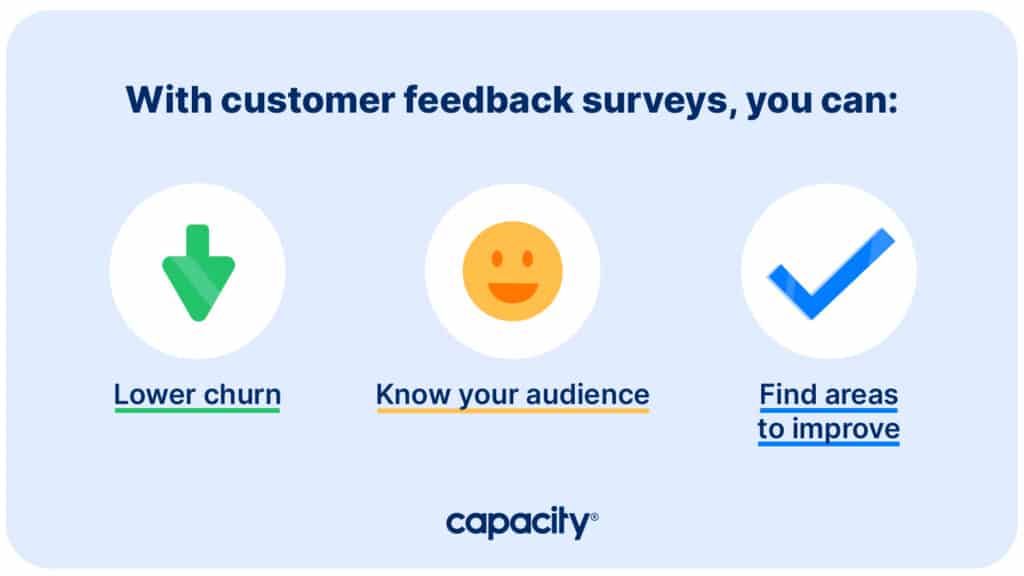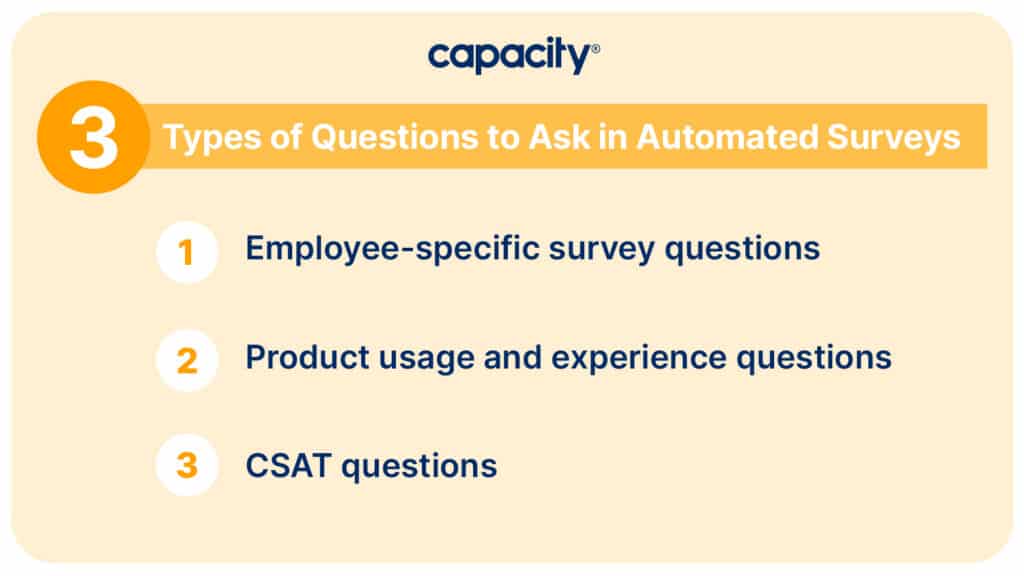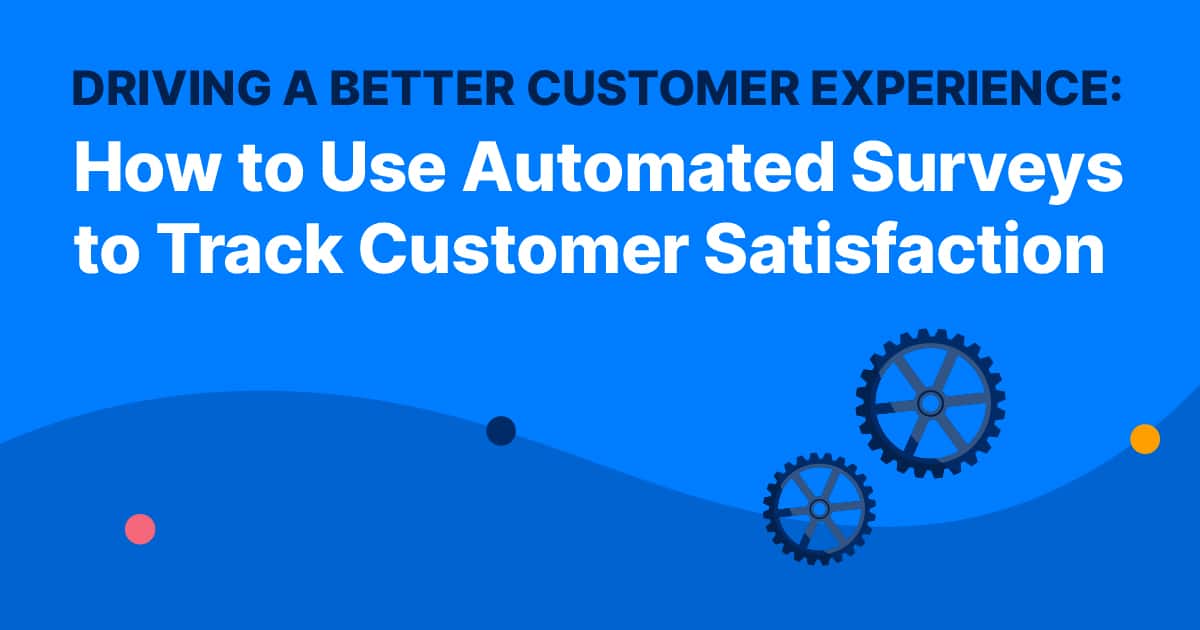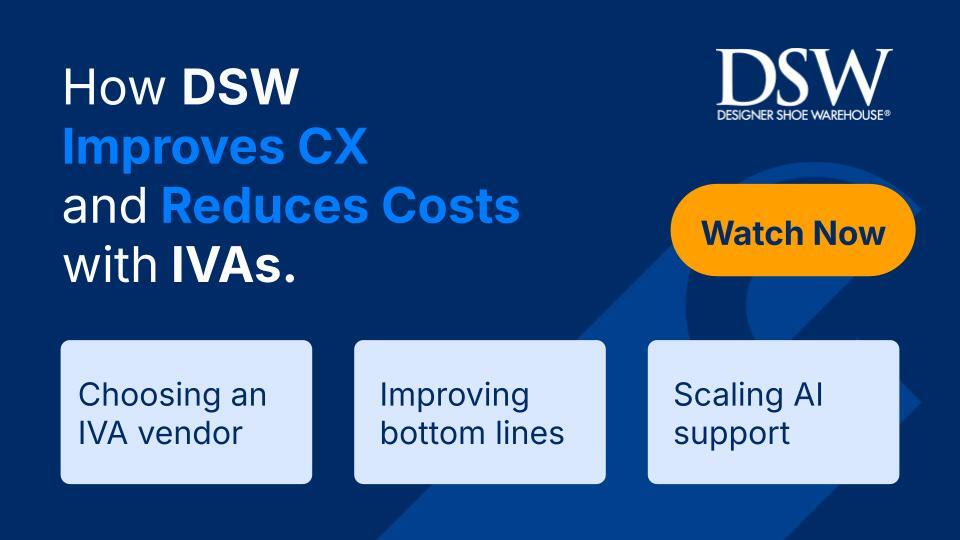How can you gauge how your customers feel unless you ask them? As many as 94% of consumers say that a positive customer service experience encourages them to continue buying from the same brand. But on the other hand, 78% of customers have backed out of a purchase because of a poor customer experience.
No one wants to find out a customer has been unhappy too late. You’ll only know that they’re happy if you start a conversation. Avoid accumulating bad reviews online or churning customers by being more proactive with your customers using automation. Gathering feedback through automated surveys gives you the insight you need to improve your customer experience, advance your product, and understand what keeps customers coming back (and how to avoid driving them away!). Let’s see how!
How automated surveys help you track customer satisfaction
Let’s get specific. What’s the point of even sending surveys? Getting feedback can take a whole lot of time and effort. You have to write the questions, figure out when to strategically send the surveys, and establish your goals and success criteria. And then, after you get the feedback, you have to (dun, dun, duhhhh) actually do something with it. It’s easy to ask questions, but it’s tempting to let feedback sit in a backlog and grow stale with time.
It’s true – asking for honest feedback can be painful, and figuring out how to apply it can be even trickier. But the benefits of using automated surveys to get real honest information from your customer base can transform your business. Here’s how.

With customer feedback surveys, you can:
Lower your churn rate
No one likes talking about customer churn. But your churn rate can tell you a whole lot about what customers think about your product or service. It costs a lot more to acquire new customers than it does to retain existing customers. In fact, an increase in customer retention of just 5% can create at least a 25% increase in profit.
To boost retention and lower churn, send frequent automated surveys to track your agents’ performance and the performance of your team’s overall service. Learn what’s working and not working with your product to keep happy customers happy and salvage relationships with those customers that need some love.
Learn more about your audience
Driving product development in a silo only leads to a product that your customers don’t want or features they don’t need. Use automated surveys to learn more about your audience. You need to know who they are to build a brand that fits the right audience. And automated surveys are a great way to gather demographic data.
Send surveys to determine customers’ interests, needs, hopes, and dreams. What is their age? What problems are they hoping to solve with your product or service? Why did they choose you over one of your competitors? What other brands do they like? Get to know your audience so you can meet their needs more successfully.
Find areas of improvement
This is a biggie. You’ll always get those customers who send in an angry email or give you a call to tell you how you can do better next time. But a lot of your customers aren’t going to go out of their way in the moment to tell you where you can improve. In fact, many of them will take their money elsewhere, embittered over some bad experience.
Automated surveys will be the best way to identify where your service or product needs improvement. To make them truly effective, though, be sure to have a plan to implement the feedback so you’re driving a better experience with it.
Why you should use automated surveys to gather your customer feedback
Keeping customers satisfied should be one of your top priorities. And the most effective way to track your customer satisfaction is through automated surveys. Automated surveys make it easy to quickly collect customer feedback on their experiences within a strategic window after an interaction. For instance, locate critical moments in your buyer’s journey to send an automated survey — like directly after a customer service interaction, right after a customer makes a purchase, or one week following the delivery of a product or service.
With automated surveys, understand in real time what your customers think and how they feel about your service. And by automating your feedback loop, your team has one less thing to worry about. You can strategically gather helpful customer information and data without extra manual effort.
So why should you use automated surveys to gather your feedback? Here are 5 benefits of automating your surveys.
Automated surveys are:
- Proactive
- Immediate
- Consistent
- Cost-effective
- Actionable
3 types of questions to ask in your automated surveys

1. Employee-specific survey questions
Your frontline employees can make or break a customer’s experience. It’s part of what makes a customer-facing role such a stressful job. But asking employee-specific questions in your automated surveys is important to see where your team meets your company’s standards. Then, if you uncover specific places your employees should improve, train and reward them for taking action on feedback to boost morale and keep them engaged. Send automated surveys when a customer finishes an interaction or when a ticket status moves to “close.”
Examples of some employee-specific survey questions
- Based on your recent interaction regarding (insert incident), how satisfied or dissatisfied were you with our customer support team member?
- How courteous or uncourteous would you say our customer service team member was?
- How knowledgeable or unknowledgeable would you say our service team member was?
- Did the employee handling your issue show empathy toward your situation?
2. Product usage and experience questions
You need to know if something is wrong with your product or if your customers aren’t sure how to use it. Get direct feedback from customers to understand how they use your product, what they like and dislike about it, and where they need a helping hand. Use automated surveys to get targeted surveys after customers use a specific part of your product or when they finish their onboarding.
Examples of some product-specific survey questions
- Which features of the product are most valuable to you?
- What are you trying to solve by using our product?
- How easy was it for you to navigate our product?
- How could we improve our product to meet your needs better?
3. CSAT questions
Your CSAT (Customer Satisfaction) Score gives you a sense of the big picture: what are your customers’ needs? Send an automated CSAT survey at critical moments in the customer journey — right after onboarding, after a repeat purchase, and after a service interaction. Then, segment your satisfied and unsatisfied customers so you can spot trends and reasons behind a particular customer satisfaction score.
Examples of questions used in customer satisfaction surveys
- Overall, how satisfied were you with our company?
- How often do you typically use our products or services?
- Based on your recent purchases, please rate your satisfaction with [a service or product attribute].
- On a scale of 1-5, how would you rate your overall satisfaction with the product/service you received?
- How does the product or service help you achieve your goal?
With automated surveys, drive real results, improve your customer experience, and keep your customers satisfied for better retention. Are you looking to add more automation? Try Capacity today or request a personalized demo.


















































